If any of you are like me and have lost a lot of time to Pokemon Go, you probably know that we are celebrating the one year anniversary since the augmented reality app was released. I grew up playing Pokemon Red, Yellow and Silver (and I still play X and Y), so of course I was immediately invested when Pokemon Go was released for mobile devices. I've been a Pokemon fan as far back as I can remember, dare I say it, even longer than I've been a fan of reptiles and amphibians!

The pocket monsters are heavily based off various plants, animals and objects that actually exist, this of course includes reptiles and amphibians (yeah, I've totally built teams of just herptile pokemon!). I think many people would actually be quite surprised at how closely some Pokemon reflect their living counterparts, both in appearance and behavior. So today, I wanted to share just a few of these herptile Pokemon and the characteristics they share with living species.
Poliwag
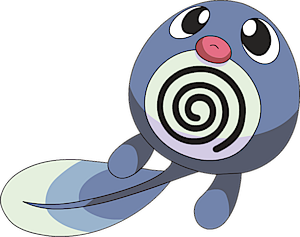
Poliwag is the tadpole Pokemon, and later evolves into the frog Pokemon Poliwhirl, and later Poliwrath or Politoed. For the most part, Poliwag is very reminiscent of a tadpole that has begun its metamorphosis to an adult frog as it bears only hind legs in addition to its tail. On its belly is a large spiral which many people just assume is a decoration for the Pokemon, however this is a very real feature of the tadpoles Poliwag is based on. Most tadpoles have transparent skin on the their bellies, which allows you to easily see their coiled intestines from the outside, as you can see in the photo below. The spiral on Poliwag's stomach isn't decorative, it's an artistic representation of tadpole innards!

Arbok
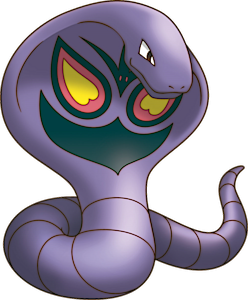
One of many snake Pokemon, Arbok is the obviously cobra-based evolution of ekans (if you couldn't tell by the name which is just "Kobra" backwards). Like Poliwag, Arbok does not differ greatly from its living analogue, except for its violet coloration, otherwise it just looks like a cartoon representation of a snake. However, it's one detail of Arbok's decor that makes it really similar to living cobras; the face on the hood. The description for this Pokemon states that the face is meant to terrify opposing Pokemon, and reduce their will to fight. This is not unlike the eye spots on the hoods of real cobras. Contrary to popular belief, a cobra does not extent its hood as a warning, it does so to look as large and as intimidating as possible (in nature, size usually means power and it a good deterrent). The hood, along with the eye spots, trick attackers into thinking the cobra is much larger than it actually is, and hopefully they will move on.
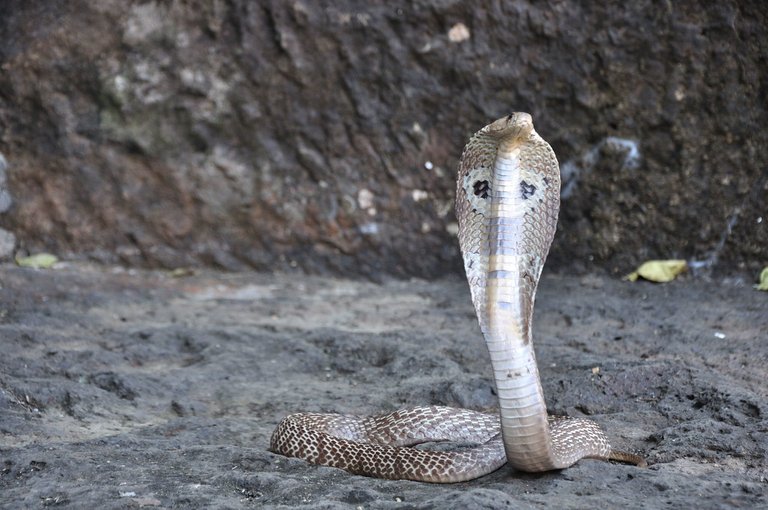
Seviper
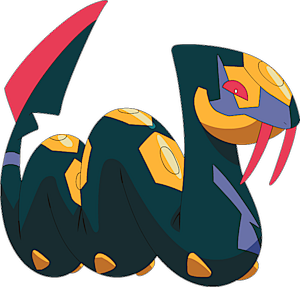
Now I'm a big fan of the first generation Pokemon, but Seviper is a pretty cool Pokemon featured in the third generation. Another snake, Seviper is very clearly a fearsome venomous species as evidenced by its huge fangs. The fangs of this Pokemon are so large that, even when the mouth is closed, they protrude almost like tusks. This is very reminiscent of a real snake known as the stiletto asp (pictured below), a species with the longest fang-to-head ratio. The fangs are so long that the snake cannot open its mouth to attack and cannot bite its prey; instead its fangs are opposable and can by pointed outwards (hence the name stiletto). When attacking prey, the snake just shakes its head back and forth to envenomate its victim with the extended fangs.

The pointed blade on Seviper's tail is also based on a snake defense. No, there are no snakes with bladed tails or sharp spikes, but some snakes do use their tails to escape from predators. The tail is often pointed (not sharp) and, because it's made of keratin, relatively hard; when picked up by a predator, many snakes will poke their attacker with the pointed tip. It's not enough to cause any sort of damage or pain, but it's hopefully enough to startle the attacker into dropping the snake.

Quagsire

Quagsire is the evolution of Wooper and is designed to resemble one of my favorite amphibians: the Hellbender (and Chinese Giant Salamanders). Hellbenders are gigantic salamanders native to North America that grow up to two and a half feet long and weigh up to five pounds when mature! The Pokedex description of Quagsire tells us that the Pokemon is covered in slime to prevent drying out; hellbenders are coated in a slick mucous which is why many people commonly call them "snot otters" (I can attest, they really do feel like a living wad of snot!). Up until a couple years ago, the existence of hellbenders really wasn't common knowledge outside the animal field, and people didn't go to zoos to look at the giant amphibians. Conservationists adopted the hellbender as a symbol of the conservation movement; unlike most species that garner global attention (like cuddly pandas, beautiful tigers and charismatic elephants) hellbenders are dull and, perhaps to some, a very ugly looking animal. But they highlighted an important point: conservation couldn't just focus in on the species we thought were cool or cute, we also had to protect species that were not as appealing to us (like snakes, bugs, etc). The hellbender began turning up a bit more in pop culture and the Pokemon Quagsire was introduced to the world in 1999.

Scraggy
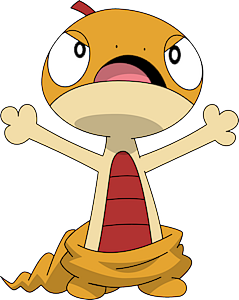
Scraggy is...weird. He's never really appealed to me when playing the game, but from a herpetological standpoint, this is a really interesting Pokemon. Scraggy is generally known as the "shedding Pokemon" and is a constant state of ecdysis. Ecdysis is the fancy term for the shedding of skin all at one time as seen in snakes and lizards. Scraggy is a bizarre looking little lizard who is constantly holding up its "pants" which is actually its molting skin; the rest of its body is a paler color to show where the skin has sloughed off to reveal newer skin beneath. Reptiles undergo ecdysis generally once a month as they grow, but this can change based on nutrition and other environmental conditions. What really interesting is that Scraggy wasn't created to represent a particular animal, but is actually the embodiment of a critical reptile developmental process!

Toxicroak
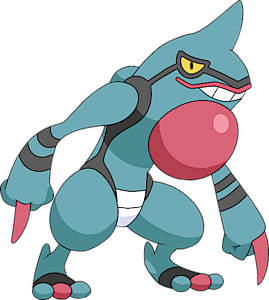
Another really weird Pokemon (they got strange after the first couple generations), Toxicroak is a poison-type frog Pokemon that can poison opponents with its sharp spikes and spines. Now we know there are poisonous frogs out there (like dart frogs) but we don't usually think of frogs injecting toxins through spikes the way Toxicroak does. Poison is generally inhaled, absorbed through the skin, or ingested (such as in frogs), while venom is injected through spines, fangs or stings (like snakes); because this Pokemon injects the poison, it would actually be considered venomous. Until quite recently, it was believe that there were no venomous frogs, that one could only be hurt by them if you attempted to eat (or lick) one. However, a couple new species have been discovered that do inject their toxins into their attackers; the Greening's frog hides small spines just beneath the skin on its head. When provoked, the frog headbutts its attacker, the spines pierce the frog's (and victim's) skin and the frog delivers toxin straight to the bloodstream (25 times more potent than pit vipers).

Lapras
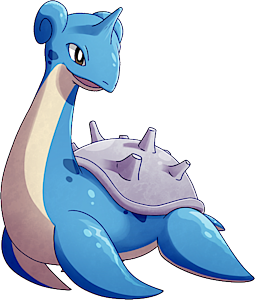
Lapras has always been a fan favorite, a cool looking rare Pokemon with powerful abilities. As you can probably tell by looking at it, Lapras is heavily based off of living marine turtles, and in the game it represents a popular means of conveyance across the world's oceans, lakes and rivers. However, what makes Lapras so interesting (at least in my mind) is that it's the first Pokemon that bears some extensive information on its conservation status. Even in the games and animated series, it is explained that Lapras are quite rare due to being almost driven to extinction by hunters (due to its gentle nature), however populations are rebounding thanks to conservation efforts. This is where Pokemon really interests me and goes beyond the standard monster battling; there is extensive information regarding the natural biology of these fictitious creatures and their interactions with humans (who knew Pokemon had a conservation message?). Just like their Pokemon analogue, marine turtles remain at risk due to over-hunting, by-catch, boat accidents and a host of other threats. Conservationists are working hard to bring these amazing reptiles back from the brink.

Torkoal
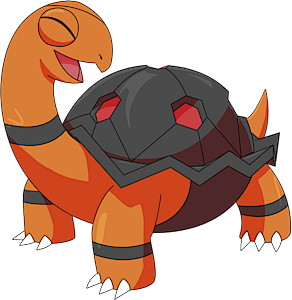
Torkoal, as its name suggests, is essentially a fire-type tortoise. According to the Pokedex description, it collects coal to burn within the hollow parts of its shell, which it uses to launch devastating flame-based attacks. Now obviously, no turtle is going around roasting other critters to a crisp. In fact, all turtles and tortoises are exothermic (cold-blooded) meaning they get their heat from the environment, and are incapable of generating internal heat through cellular metabolism like we do. However, that doesn't mean there aren't turtles that can generate internal heat. The humongous leatherback turtle dives deep in the ocean where the temperature may drop as low as 8°C (46.4°F), but the turtle is able to maintain its body temp between 25 and 26°C (77 - 79°F). To warm themselves, these giants rely, in part, on gigantothermy, generating heat through their sheer bulk.
The bigger the animal is, the lower as surfaceto-volum e ratio; for every ounce of body mass, there is proportionately less surface through which heat can escape. Source
Sure, the leatherback isn't going to be scorching anyone at 78 degrees, but it does go to show that the idea of a reptile generating its own heat is not impossible!

Even the most fictitious creatures and characters draw from reality. And, as I love to tell people, you can relate almost anything back to herpetology if you try hard enough! Reptiles and amphibians have played such a heavy role in human culture that it's really no surprise they surface even in comically fictitious places like the world of Pokemon! This is @herpetologyguy and, until next time, I say watch more cartoons and play more games! You never know what you might learn!
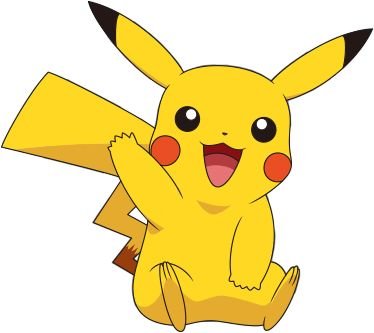
Image Links: 1, 2, 3, 4, 5, 6, 7, 8, 9, 10, 11, 12, 13, 14, 15, 16, 17, 18, 19

This is great, and I'm starting to like your channel A LOT...maybe even too much haha. I even looked into buying a mata mata, but I don't know if I'm quite ready for a 75 year investment
They are high on my wishlist too! I normally don't like turtles as pets as compared to other reptiles, but the mata mata is really tempting!
Yeah I'm just afraid it will get too big and also that it might snap at me constantly if I try and pick it up. But yeah I saw one on this site online selling them for $150 and that ain't bad.
That's a really good price ! And they do have a nasty bite, but I believe they calm down quickly with handling (I've seen a lot of really docile snappers thanks to handling!). The size is an issue though!
I remember the good ol days, when there were only 151 pokemon. I cant keep up with it now lol
First gen is by far the best, but I like 2nd and 3rd to an extent. Beyond that I'm kinda meh lol
Ahahaha this is the best post of the day! Love the way Pokemon correlate to real life species. Thanks for this!
It was probably my favorite post since the superhero one!
That's so cool! Some of these animals i've never seen before. I like Hellbender the most out of all these.
.
D̢͈̖̣̼̿͜ị͇̲͔̙̹̹ͧ͒̍́͐g̣͍͕̙̹̳̫̯̰̐i͌̈́ͥͫ̚͝͏͔̰͕̙̮͚̦̪t̡͔̱̭̱̦͙͔̭̃̆͛̑ͧͦ͡a̢̗̱̗͚̒̽̊̽̾͋̚̕͠l̷̬͎̔͜c̶̩̱̜̜̝̥͛ͮ̈̊́͘͢ő̡̰̟̳̯̼͑͆ͭ̌̑̂͠s̵͈͖͈͇̯͑͝m͈̬̤̪͎̑̾͛̉̍̔̕o͙̜̤͑ͫ̍͜s͓̯̯̰̱ͥ́̈̅̀͆͐̿͊ ̷̴͕̹̱͇̙̙͂̌̊ͭ͗͢w͖̲̩̓̉̈̋͞ͅa̷͔̲̼̟̟͈̲̹͗̿͂̈ͯ͗͜s̡̞̗͓͐̀ ͕̃ͭͬ͌̀̕͝h̴̴̢̪̮̜̅͆̆̓ͨe͙̹̝̗̱̺̝̗̼͊̉̓̕͟r̵̪̘̥͇̫͆ͬ̓̽̄ͭͮ̊ë̸̟̪͈̝̫͔̥̺́ͤ͠ͅ
.
They're a really awesome animal! Definitely a cool species to work with, but man are they a pain to maintain!
Nice photos tnx for the share
This post received a 4.9% upvote from @randowhale thanks to @herpetologyguy! For more information, click here!
Yes very fun post. Some reptiles are nice and cute and some are not so cute and dangerous. Make sure you know which one you are dealing with before you try to pet them. e.g. avoid news anchor reptilians.
This was awesome. Upvoted and Resteemed.
Great article! Upvoted and followed you :) Mind to check out my post - Pokemon Store in Tokyo Character Street? Thanks!
Pokemon!!! Catch'em all! My Early teenage years. :,) Life offers much more marvelous creatures than Pokemon does.
You're so passionate in the subject that you made me passionate the time of a read.
Cheers!